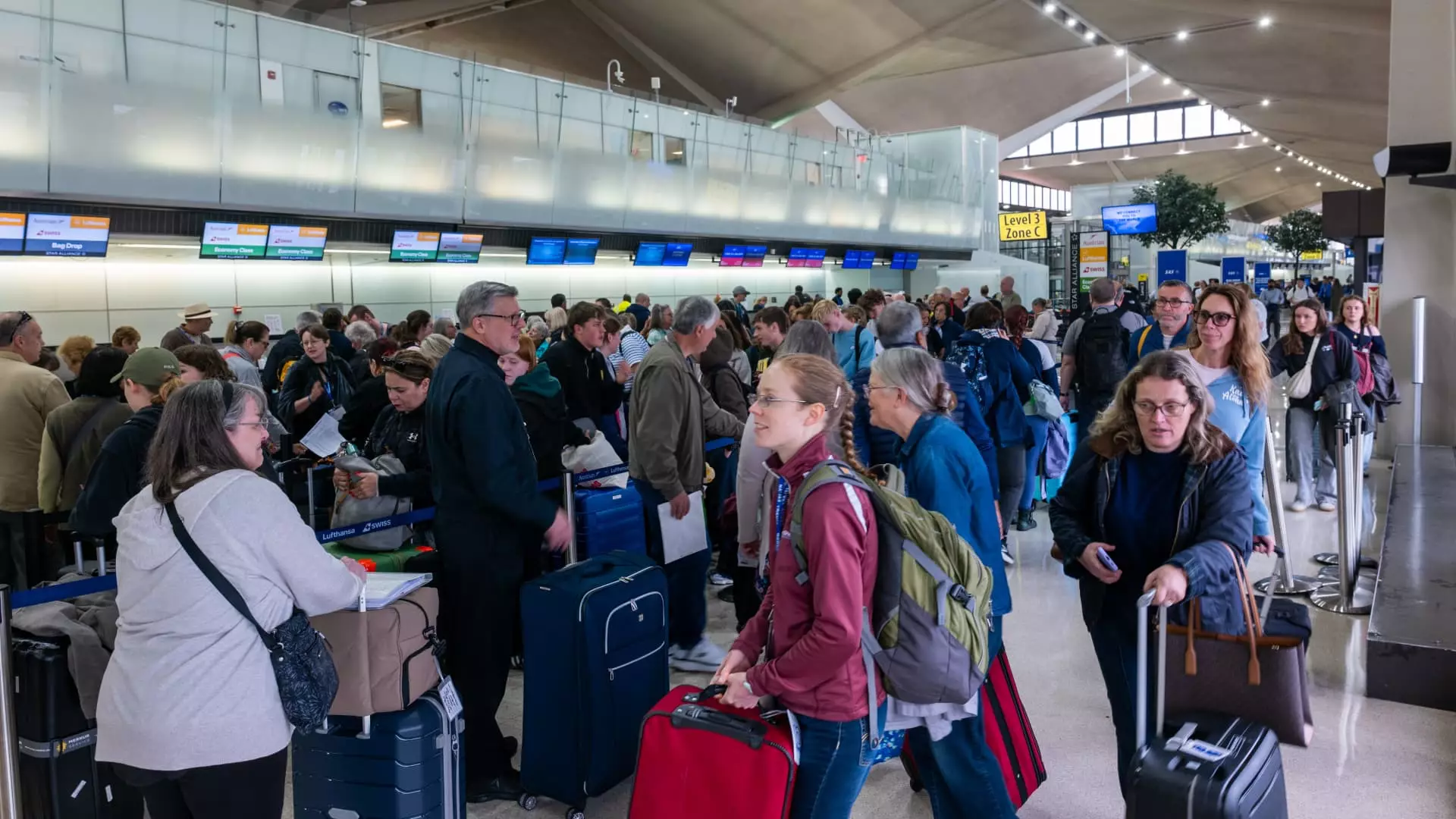The recent communication blackout among air traffic controllers managing Newark Liberty International Airport serves as a concerning marker of the vulnerabilities in the aging U.S. aviation infrastructure. On April 28, controllers experienced a complete radar and communications failure that left them blind to the very aircraft in their charge. For almost 90 seconds — a perception of time that, in aviation, can equate to an eternity — planes went untended as controllers struggled without means to communicate. The incident, sadly, is just another folly in a long list of systemic failures that hint at a dire need for reform and investment in air traffic management.
The fallout from this incident was not trivial—over 1,500 flights were delayed as chaos ensued. Such catastrophes are becoming increasingly frequent, drawing attention to staffing shortages and outdated technology. The National Air Traffic Controllers Association (NATCA) revealed that the stress of the incident took a toll on controllers, prompting them to take time off work, an occurrence alarmingly referred to as “walking off the job” by United Airlines’ CEO Scott Kirby.
Understaffing and Technological Obsolescence
The statistics speak volumes. The FAA has acknowledged persistent staffing shortages that destabilize air traffic management. The controller force is not just short; it is critically depleted. The issue is exacerbated by the fact that controllers are required to retire at age 56, a policy that chips away at an already dwindling workforce. United Airlines, which has had to cut 35 flights daily from Newark, is now at the mercy of a system that has struggled with operational adequacy for years.
While the push for modernization is clear, recent attempts by the Trump administration to bolster hiring and retention are falling short. The expectation that minor incentives can stem the tide of systemic issues appears naive at best. Such half-measures only serve to highlight a more profound problem present in our transportation framework. The FAA’s attempts to redistribute controllers from a facility in Long Island to Philadelphia may have alleviated some pressure, but it hardly addresses the deeper issues relating to workforce stability and technological upgrades.
Consequences of Neglect
The Port Authority has invested billions into upgrading Newark Liberty, yet all efforts remain futile if contingent on a robust air traffic system that is either unable or unwilling to evolve. Secretary of Transportation Sean Duffy’s recent acknowledgment that “the system we’re using is not effective” exposes a fatal flaw in our aviation management approach. By merely conceding that the current infrastructure isn’t fit for purpose, Duffy confirms that we are operating on borrowed time.
The National Transportation Safety Board (NTSB) and the FAA can ensure safety by slowing planes down or even grounding them. However, such actions are fundamentally reactionary and lack proactive intent. Having to halt air traffic in a congested airspace due to inadequate staffing and outdated technology should be considered an embarrassment in a nation that prides itself on being a leader in aviation.
The Regional Implications of National Neglect
The persistent disruptions have far-reaching ramifications. New Jersey’s Governor Phil Murphy’s focus on addressing staffing shortages at the Philadelphia center is warranted, as travelers are anxious about delays that could spiral out of control as we prepare for major events, such as the forthcoming World Cup Finals. Addressing staffing crises is paramount, and Murphy’s insistence on prioritizing regional funding might be the initial step toward revisiting a national strategy that clearly values technology over personnel.
What is particularly frustrating is the argument surrounding the importance of aviation infrastructure as a backbone of our economy. Businesses rely heavily on timely air transport to function efficiently. As delays pile up, financial losses skyrocket, and consumer confidence wanes. For a nation that prides itself on being a beacon of innovation, our air traffic management operates under an achingly outdated model that, unless modernized, will doom economic performance and public safety alike.
Ultimately, this latest episode at Newark is more than just a technical malfunction; it is a clarion call for rethinking how we prioritize our aviation systems. If we don’t heed this warning, we might soon face an air traffic system that falters under its weight rather than soaring towards progress and growth.

